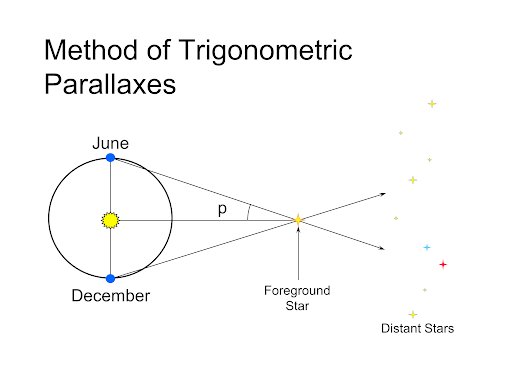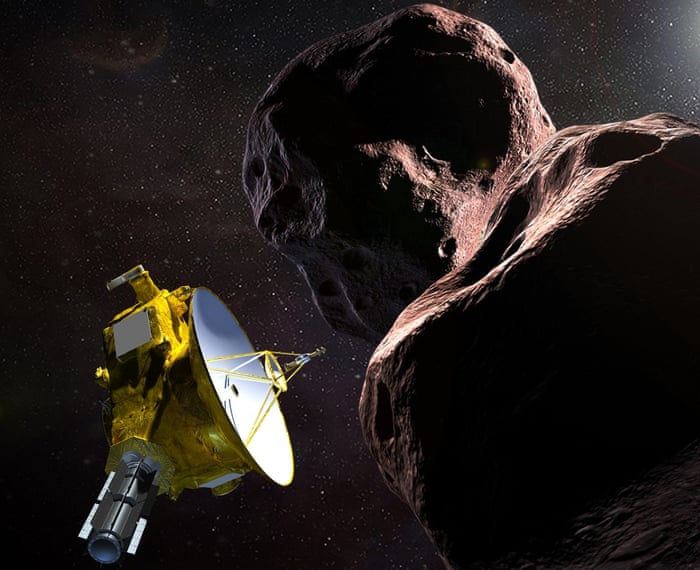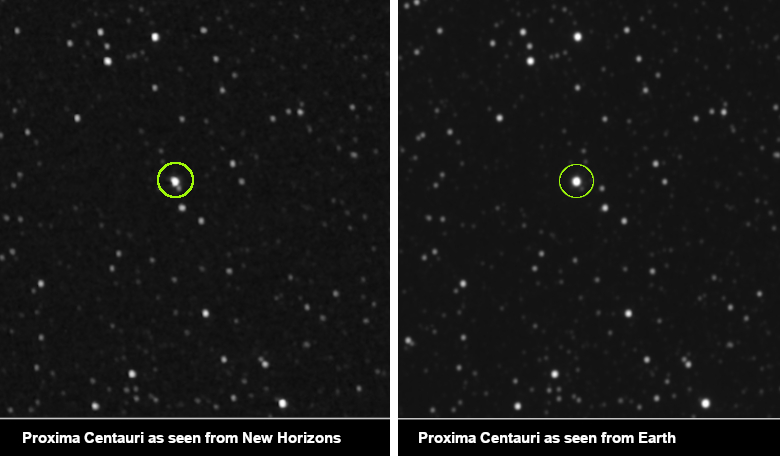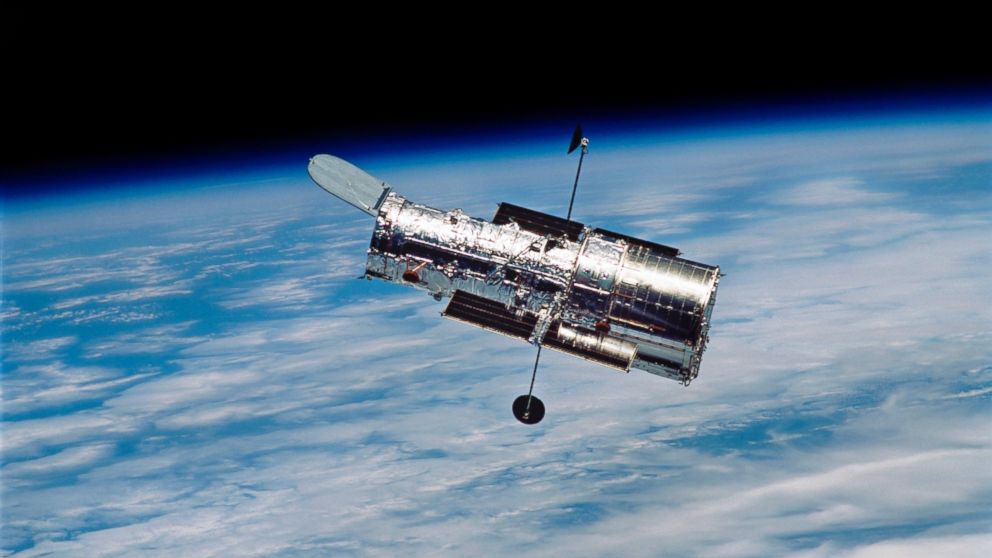The most difficult, and therefore most important measurement that astronomers try to make of the many objects in our sky is distance. Think about it, how would you, without the help of an astronomer or other scientist, measure the distance to the Moon, the very closest neighbor to our Earth?

Well the way astronomers first measured the distance to the Moon, and the nearby planets Venus and Mars, is called parallax and it’s a technique that you’re very familiar with whether you know it or not. You see parallax is the way that you judge distances using your two eyes.
Did you ever stick one of your fingers up in front of you face and close one eye. Then, by switching back and forth between your two eyes, one at a time, your finger seems to move against the background of more distant objects. That’s parallax, and by simple use of trigonometry you can use that apparent movement to measure the distance to your finger.

Of course as objects get further away the apparent movement becomes smaller, more difficult to measure accurately. Conversely if the baseline, that is the distance between the two observation points, is made wider the apparent movement is increased making it easier to accurately measure the apparent movement. Therefore astronomers want the widest possible baseline in order to measure the greatest possible distances.

It was the early Greeks who first recognized now parallax could be used to the measure distances to astronomical objects and indeed it was a Greek mathematician named Hipparchus who used the width of the Earth itself as his baseline in order to estimate that the Moon’s distance was about 60 times the Earth’s radius. That works out to be about 380,000 kilometers, so he was pretty accurate.

Still, even using the entire width of the Earth as a baseline the angle formed by the Moon is only about two degrees while that for Venus or Mars at their closest is only about one second of arc. One second of arc is a very small angle but using their telescopes astronomers can measure it and by doing so they could accurately find the distances across our Solar System.
Once astronomers had all of the distances within our Solar System they realized that they now had a newer, much bigger baseline from which to measure the distances to the stars themselves, Earth’s orbit around the Sun. You see if you measure the position of what you think is a nearby star against stars that you think are much further away in June, and then make the same measurement six months later in December the Earth will be on the other side of the Sun from where you made the first measurement. In that way your baseline will be the diameter of Earth’s orbit, about 150,000,000 kilometers. Using this new baseline in 1838 the astronomer Friedrich Bessel made the first measurement of the distance to a star, the star 61 Cygni at a distance of about 105 Trillion kilometers or 11.2 light years.

Using Earth’s orbit as their baseline, and with the newest telescopes, including the Hubble Space Telescope, astronomers are now able to accurately measure the distances to stars as far away as 10,000 light years. Even with those powerful telescopes however astronomers would still like to be able to extend that baseline farther. To somehow get a telescope well beyond Earth’s orbit.
NASA has begun experimenting with just that using the camera on board the New Horizons space probe, currently 40 times further from the Sun than the Earth is. Therefore using New Horizons as one observation point and a telescope here on Earth as the other would give a baseline of more than 6 billion kilometers, more than 40 times that possible using only telescopes here on Earth.

On April 22-23 of this year the scientists controlling New Horizons commanded the spacecraft to photograph the areas of the sky containing two of the nearest stars, Proxima Centauri and Wolf 359. Those images were then compared to images of the same regions taken by an Earth bound telescope and the effect of parallax was immediately clear.

Now the camera onboard New Horizons is neither powerful enough nor accurate enough to be used to make more accurate measurements than the more powerful Earth bound telescopes. This was just an experiment on NASA’s part. It is worth considering however, that if the Hubble space telescope could somehow be placed where New Horizons currently is a combination of it and an Earthbound telescope using parallax would allow astronomers to completely and accurately measure the distance to objects as far away as 400,000 light years.

Perhaps in the near future NASA may consider just such a mission. Consider a smaller version of Hubble; say with a one-meter diameter mirror instead of Hubble’s 2.5-meter diameter but a telescope with the same focal length and stability as Hubble. Using flybys of Jupiter and Neptune such a telescope could be placed into an orbit around the Sun beyond Neptune’s where it would be in position to allow astronomers to finally obtain a complete and accurate 3D map of our entire galaxy.
I’ll bet you there’s someone at NASA working up a design right now!
